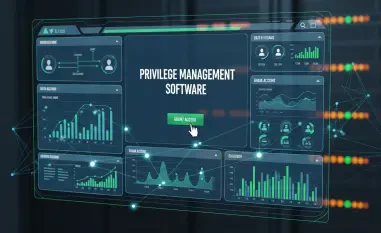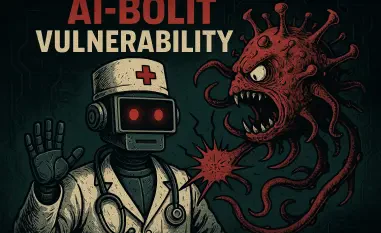In a rapidly evolving digital landscape where cyber threats are becoming increasingly sophisticated and persistent, traditional cybersecurity measures often find themselves at a disadvantage. Conventional approaches primarily rely on defensive and reactive strategies, focusing on fortifying systems and responding to breaches after they occur. However, this method frequently falls short in preventing adversarial actions before they manifest. As cyberattacks grow more frequent and complex, the question arises: Can a shift toward proactive cyber deterrence enhance and transform traditional cybersecurity practices?
Cyber deterrence, a concept often underutilized in cybersecurity frameworks, offers a promising approach to preemptively dissuade attackers. It integrates strategies aimed at making cyber offenses less appealing by increasing the potential costs and reducing the benefits for adversaries. This article critically examines the potential of cyber deterrence in redefining cybersecurity efforts and debunking myths that hinder its adoption. We will explore its mechanisms, the evolving landscape, and its integration into organizational structures, concluding with insights on future directions for cybersecurity professionals.
Debunking Cyber Deterrence Myths
Myth of “Hacking Back”
One of the most pervasive misconceptions regarding cyber deterrence is that it equates to “hacking back,” a practice perceived as illegal and counterproductive retaliation. Many envision cyber deterrence as the act of retaliating against attackers by infiltrating their systems, an approach fraught with legal and ethical issues. However, legitimate cyber deterrence encompasses various lawful methods designed to dissuade cybercriminals. For instance, bug bounty programs incentivize ethical hacking, urging white-hat hackers to identify and report vulnerabilities which can be mitigated before exploitation. “Name and shame” initiatives publicize the identities of cybercriminals, discouraging illicit activities through societal pressure and reputational damage.
Additionally, honeypots—decoy systems that mimic legitimate targets—serve to confuse and distract attackers, wasting their resources and time. Ransom payment “claw backs” aim to recover payments made to cyber extortionists, diminishing the financial rewards of ransomware attacks. These strategies collectively refute the myth that cyber deterrence is synonymous with unauthorized hacking, highlighting its role in legally and ethically protecting cybersecurity ecosystems. Proactive measures in cyber deterrence are designed to create a hostile environment for attackers, reducing their motivation to initiate threats and breaches.
Myth of Inherent Proactive Deterrence
Another prevalent myth is the assumption that all proactive cybersecurity measures inherently provide deterrence. While proactive strategies such as advanced threat detection, continuous monitoring, and vulnerability assessments significantly enhance defensive capabilities, they don’t necessarily deter attacks outright. The focus remains on bolstering protection and improving incident detection and response. Genuine deterrence involves deliberately influencing the behavior of potential adversaries, compelling them to reconsider their plans due to perceived risks and decreased potential rewards.
Traditional proactive measures, while crucial, largely aim at enhancing internal defenses and do not directly address the attacker’s decision-making process. Integrating cyber deterrence means shifting this paradigm to proactively alter the threat landscape. Implementing tactics such as preattack takedowns of malicious infrastructure or actively intercepting attack preparations forces cybercriminals to reassess their methods. Effective deterrence strategies incorporate metrics that measure success in reducing adversary actions, ultimately transforming how proactive cybersecurity measures operate.
Evolving Cybersecurity Landscape
Gartner’s Predictions and Organizational Integration
Reflecting on the future of cyber deterrence, Gartner has forecasted significant changes in large enterprises’ security practices. By 2027, it is predicted that over 75% of major organizations will incorporate some form of cyber deterrence tactics. This shift towards formalizing deterring strategies marks a transformation in the cybersecurity landscape, as organizations mature in their approach to threat mitigation. As enterprises embrace these strategies, the threat dynamics become increasingly complex, requiring cybersecurity professionals to continuously adapt and refine their approaches.
For deterrence programs to be effective, they must transcend the boundaries of traditional IT departments, integrating deterrence measures across various organizational facets. A comprehensive security posture encompasses aligning departments such as legal, communications, HR, and executive leadership. Each department plays a role in shaping the deterrence strategy—legal teams navigate compliance, communications manage public disclosures, HR oversees workforce training, and executive leaders steer strategic initiatives. The Gartner PARC Framework—Profit, Anonymity, Repercussions, and Costs—serves as a foundational model to address multiple motivations driving attackers, from financial gain to anonymity and evasion. This framework guides organizations in systematically devising and implementing deterrence tactics tailored to specific threats and adversarial profiles.
Continuous Improvement and Organizational Dynamics
In the quest for an effective cyber deterrence program, identifying and understanding threat actors’ motivations is critical. Adversaries are rational actors swayed by positive and negative incentives. Organizations must leverage insights into these motivations to craft deterrence strategies that disrupt attack plans and diminish the appeal of cyber offenses. Dynamic refinement of tactics ensures that deterrence measures remain effective in response to evolving threats and methodologies. This continuous improvement cycle involves assessing the impact of deterrence initiatives, tracking metrics such as the preemptive takedown of malicious domains or infrastructure-heavy attack vectors.
Promoting collaboration and synergy among organizational departments is vital for the resilience and adaptability of deterrence programs. Interdepartmental communication fosters an integrated approach to cybersecurity, enabling organizations to anticipate threats and respond cohesively. By embedding cyber deterrence within the broader security strategy, organizations develop a resilient cybersecurity environment, ready to counteract adversarial actions. Implementing a dynamic and comprehensive approach to cyber deterrence encourages continuous evolution, keeping pace with rapidly changing threat landscapes.
Future Considerations for Cybersecurity Professionals
Strategic Opportunity for CISOs
With cyber deterrence now positioned as a key element in the evolving cybersecurity landscape, Chief Information Security Officers (CISOs) find themselves at a strategic crossroads. The integration of proactive deterrence measures within the broader cybersecurity framework presents an opportunity for CISOs to redefine their organization’s approach to threat mitigation. By prioritizing deterrence, CISOs can foster a security culture that actively dissuades attackers, enhancing overall resilience. This shift requires a combination of tactical execution and strategic foresight, leveraging the insights provided by frameworks like Gartner’s PARC.
Emphasizing these proactive tactics allows CISOs to move beyond traditional defensive postures, transforming their role into that of strategic enabler of cybersecurity resilience. Cultivating an environment where deterrence measures are integral to the overall strategy empowers organizations to preempt threats, reduce vulnerabilities, and establish a proactive cybersecurity culture. This requires CISOs to champion innovation, encourage collaboration across departments, and commit to continuous improvement cycles that adapt deterrence tactics to the evolving threat landscape.
Global Perspectives and Technological Advancements
Significant advancements in cybersecurity require a shift in approach, particularly in today’s world where cyber threats are increasingly sophisticated and continuous. Traditional cybersecurity measures, which mainly focus on defending and responding to breaches after they happen, often struggle to keep up. With cyberattacks becoming more frequent and complex, the question arises: Can shifting to proactive cyber deterrence enhance and transform traditional cybersecurity practices?
Cyber deterrence, often overlooked in cybersecurity strategies, offers a promising approach to discourage attackers preemptively. It involves tactics that make cyber offenses less attractive by raising the potential costs and lowering the benefits for cybercriminals. This article critically evaluates the potential of cyber deterrence to redefine cybersecurity efforts and dispel myths hindering its adoption. We will delve into its mechanisms, the evolving landscape, and how it can be integrated into organizational structures. The conclusion will provide insights on future directions for cybersecurity professionals.













